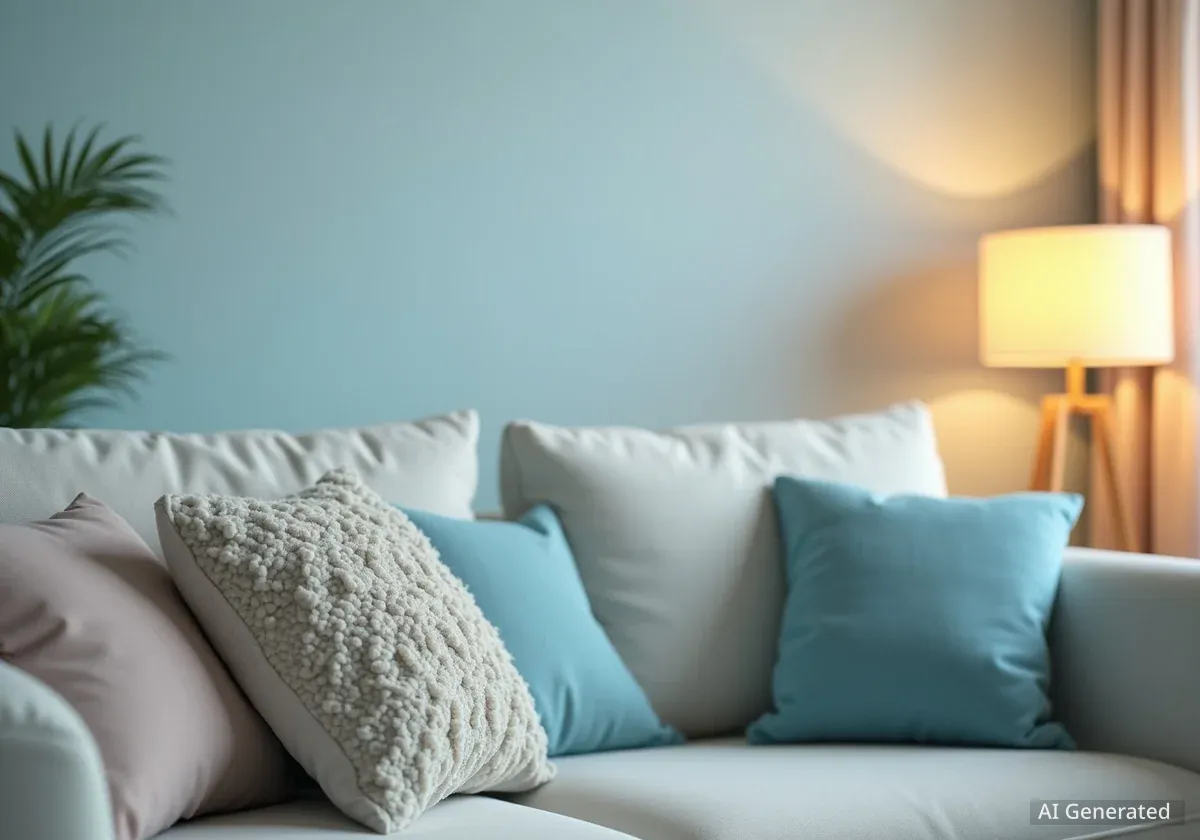Transforming a living space does not require a large budget or a full renovation. Small, intentional changes can significantly update a room's appearance and feel. Interior designers emphasize that focusing on elements like texture, color, and lighting offers the most impactful results without high costs. This approach allows homeowners to refresh their surroundings effectively and affordably.
Key Takeaways
- Small updates can dramatically change a room's feel.
- Focus on lighting, paint, and textiles for cost-effective improvements.
- Designers recommend intentional choices over extensive renovations.
- Budget-friendly options range from $15 to $500, offering broad accessibility.
Smart Updates for Any Budget
Many homeowners believe that a fresh look for their home demands significant financial investment. However, design professionals confirm that this is not always the case. Texas interior designer Jena Salmon states,
“There are a lot of things that can be done quickly and inexpensively—just remember, less is always best.”This principle guides many designers in creating stylish spaces on a limited budget. The key lies in strategic, thoughtful choices that enhance a room's existing structure.
Experts suggest that understanding the power of subtle changes can save homeowners thousands. Instead of replacing major furniture pieces or undertaking structural work, attention shifts to accents and finishes. These smaller elements can redefine the mood and visual appeal of any room. This approach makes home improvement accessible to a wider audience.
Quick Fact
According to a recent survey, over 60% of homeowners seek budget-friendly ways to update their living spaces, prioritizing cost-effectiveness over major renovations.Enhancing Spaces with Textiles and Paint
Tablecloths and Layering
Adding a tablecloth to a side table can introduce new texture and color. Jena Salmon suggests exploring collections from retailers like Ballard Designs. For a custom fit, crafting with colored duct tape can provide a unique solution. This simple addition elevates a table from a functional item to a decorative focal point.
Coastal designer Amanda Lindroth recommends using chick blinds with drapery panels. She notes,
“They’re so affordable and add that extra air of well-traveled elegance.”Adding layers, whether through window treatments or other textiles, creates depth and sophistication. This layering technique applies to various elements within a room, enhancing its overall richness.
The Power of Paint
Paint remains one of the most effective and affordable ways to transform a room. Jena Salmon emphasizes,
“Paint truly does completely transform a room.”She advises against accent walls, suggesting a full commitment to all walls or focusing only on trim. A uniform approach often creates a more cohesive and polished look.
Gabriela Eisenhart, Founder and Principal Designer of Silo Studio Design in Atlanta, Georgia, agrees. She states,
“Paint and lighting are two of the best ways to really change the feel of a space when the budget runs tight. A fresh coat of paint instantly breathes new life into a room.”Dull or dirty walls can make a home feel less inviting, highlighting the importance of a fresh coat.
Background on Biophilic Design
Biophilic design integrates natural elements into built environments. This approach aims to connect occupants with nature, improving well-being, reducing stress, and enhancing cognitive function. Incorporating plants and natural light are common biophilic strategies.Illuminating Rooms with Smart Lighting Choices
Fixture and Bulb Upgrades
Lighting plays a crucial role in a room's atmosphere. Gabriela Eisenhart points out,
“Improper lighting can really affect the feel of a room, and your mood.”If replacing fixtures is not feasible, simply swapping bulbs to a warmer temperature can make a difference. Installing a dimmer switch provides control over ambiance, allowing adjustments for various activities and moods.
Lampshades and Layered Lighting
Atlanta designer Liz Williams suggests swapping out lampshades as a budget-friendly update. She explains,
"It’s such a simple change, but a fresh shade in a new shape, color, or fabric can completely transform the look of a lamp—and by extension, the entire room."This small detail adds an intentional and custom feel to the space.
Mallory Robins and Elizabeth Bennett of Kobel + Co advocate for layered lighting. They note,
“Overhead lighting alone can leave a room feeling flat, but by layering in table lamps, sconces, or a floor lamp (even an inexpensive one), you create pools of warm light at different levels.”This strategy makes a space feel more intimate, inviting, and stylish without a major investment. It is about styling with light to transform both mood and appearance.
Rugs, Pillows, and Natural Elements
Rugs to Redefine Space
Introducing or changing rugs is another effective method, according to Liz Williams. She says,
“A new rug can redefine the mood of a space, adding texture, warmth, and color without requiring a full redesign.”Whether choosing a vintage rug for character or a fresh pattern for a modern touch, rugs offer an impactful and accessible refresh.
The Kobel + Co duo also suggests low-cost custom rugs. They explain,
“A simple, low-investment carpet—like sisal or synthetic sisal—cut to fit your room’s exact dimensions can instantly make the space feel polished, grounded, and intentional without straining your budget.”For added color or pattern, layering a vintage rug on top of this base layer creates a rich, finished look at a surprisingly low overall cost.
Pillows with Personality
Pillows are described by Kobel + Co as a room’s wardrobe. They advise investing in a quality insert and then treating covers like outfits, swapping them for bold or neutral looks depending on the season.
“A quick swap instantly shifts the mood, giving your space a whole new look without the overhaul,”they state. This trick works well in any room, from living areas to bedrooms.
The Freshness of Plants and Flowers
For quick, low-budget lifts, Jena Salmon recommends flowers or plants. She suggests placing green plants around the house to add a fresh, inviting look. This aligns with biophilic design principles, which not only enhance aesthetics but also help filter toxins from the air.
For flowers, Salmon proposes buying a few bunches from stores like Trader Joe’s and dividing them. She suggests using everyday items like water glasses, pitchers, or mint julep cups as vases.
“I love to have flowers in our home. They just make me smile,”she shares. These small touches bring natural beauty and a sense of joy into the home.
- Plants: Improve air quality and add natural aesthetics.
- Flowers: Provide color and a fresh, inviting atmosphere.
- Vases: Use existing household items for creative display.
These expert-approved strategies demonstrate that significant home improvements do not require extensive spending. By focusing on intentional, smaller updates, homeowners can achieve a refreshed and inviting environment. From under $15 to around $500, these tips offer practical ways to revitalize any space.




